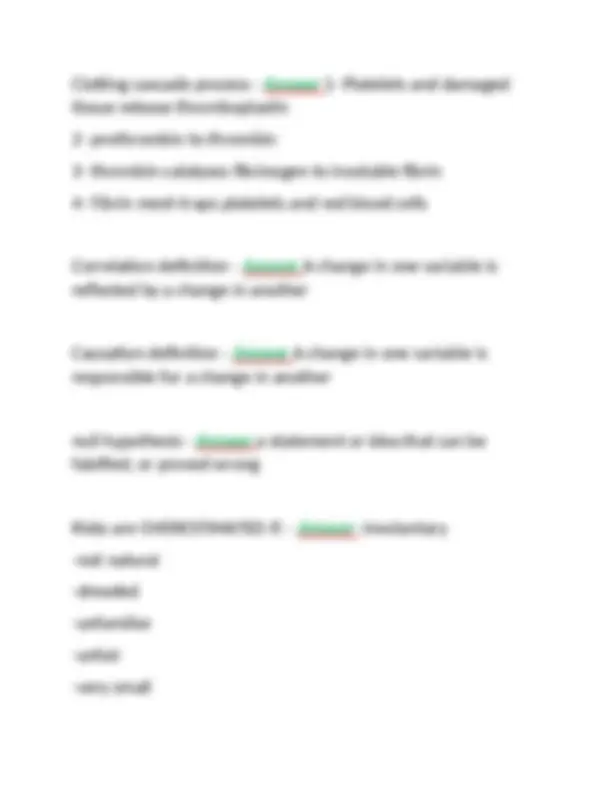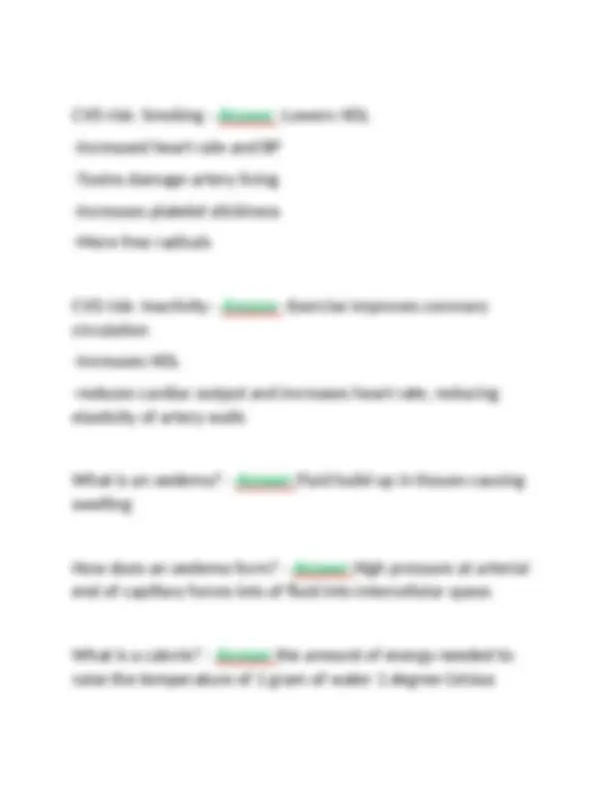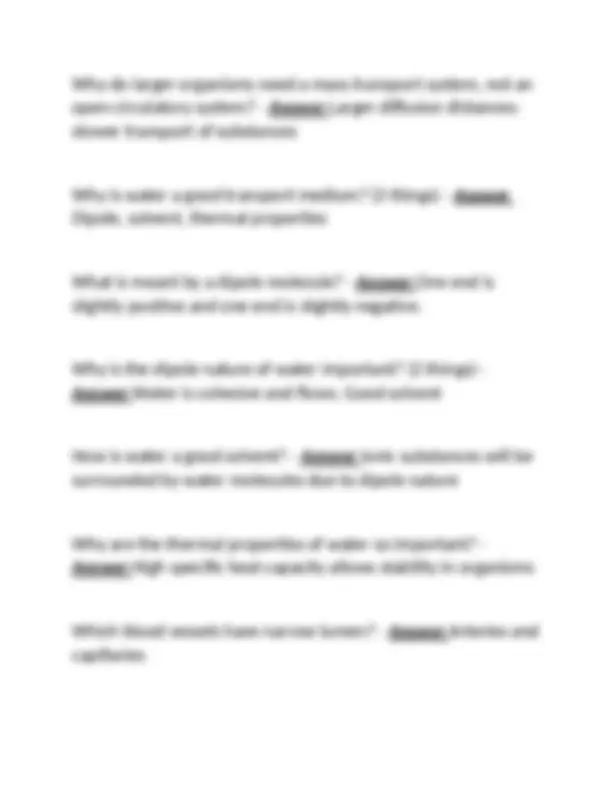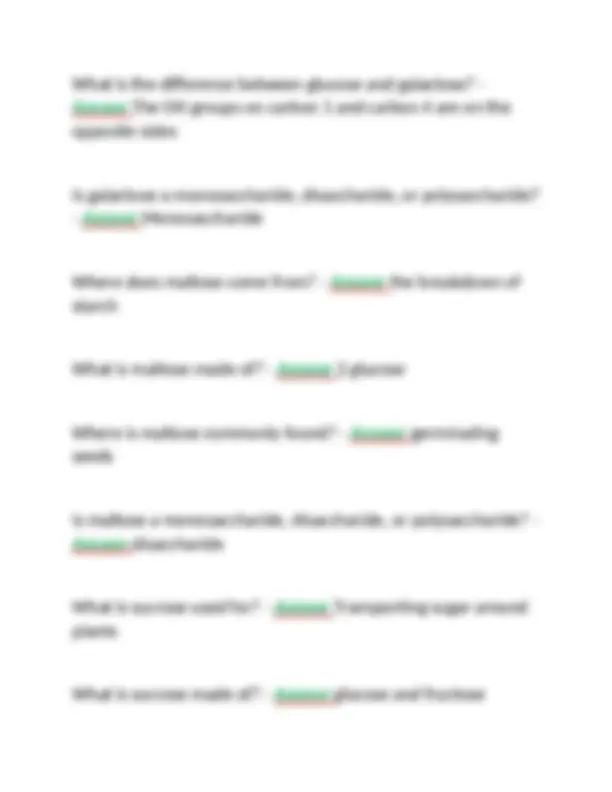








Study with the several resources on Docsity

Earn points by helping other students or get them with a premium plan


Prepare for your exams
Study with the several resources on Docsity

Earn points to download
Earn points by helping other students or get them with a premium plan
Community
Ask the community for help and clear up your study doubts
Discover the best universities in your country according to Docsity users
Free resources
Download our free guides on studying techniques, anxiety management strategies, and thesis advice from Docsity tutors
Edexcel A Level Biology Topic 1 Questions with solutions 2024 update How are capillaries adapted to their function? - Answer permeable walls 1 cell thick, close to every cell What are the 3 stages of the cardiac cycle? - Answer atrial systole, ventricular systole, diastole Features of atrial systole - Answer -Atria contract, ventricles relax -Atrioventricular valves open
Typology: Exams
1 / 11

This page cannot be seen from the preview
Don't miss anything!







How are capillaries adapted to their function? - Answer permeable walls 1 cell thick, close to every cell What are the 3 stages of the cardiac cycle? - Answer atrial systole, ventricular systole, diastole Features of atrial systole - Answer -Atria contract, ventricles relax -Atrioventricular valves open -Blood pushed into ventricles
Features of ventricular systole - Answer -Ventricles contract , atria relax -Semilunar valves open -Blood pushed into aorta and pulmonary artery Features of cardiac diastole - Answer -Atria and ventricles relaxed -Blood returns to heart -Atria and ventricles fill features of the heart - Answer -Four chambered, sends blood to the upper and lower body. -double pump Atherosclerosis - Answer 1- Endothelium damaged or dysfunctional 2-Inflammatory response 3-Calcium salts and fibrous tissues harden, forming plaque 4-Increased blood pressure, positive feedback
Risks are UNDERESTIMATED if: - Answer -Consequences occur in the long term Cohort studies - Answer Record exposures of a large group of unaffected people throughout time Case-control study - Answer Compares a group of people with a disease to a group of people without a disease CVD risk factor: Genetics - Answer -Some alleles increase risk of CVD -Family history increases risk CVD risk factor: Diet - Answer -Too much salt increases BP -Alcohol constricts arteries, increases BP -Obesity increases risk -High in sat fat and low in unsat fat increases risk CVD risk: Blood Pressure - Answer -High BP increases risk of damaging arteries
CVD risk: Smoking - Answer -Lowers HDL -Increased heart rate and BP -Toxins damage artery lining -Increases platelet stickiness -More free radicals CVD risk: Inactivity - Answer -Exercise improves coronary circulation -Increases HDL -reduces cardiac output and increases heart rate, reducing elasticity of artery walls What is an oedema? - Answer Fluid build up in tissues causing swelling How does an oedema form? - Answer High pressure at arterial end of capillary forces lots of fluid into intercellular space. What is a calorie? - Answer the amount of energy needed to raise the temperature of 1 gram of water 1 degree Celsius
What bonds connect monosaccharides? - Answer Glycosidic bonds In what reactions are glycosidic bonds formed? - Answer Condensation What is glucose used for? - Answer cellular respiration What is the formula of glucose? - Answer C6H12O Is glucose a monosaccharide, a disaccharide, or a polysaccharide? - Answer monosaccharide Where does fructose come from? - Answer fruit, honey and some vegetables What is a use of fructose? - Answer Attracting animals to eat fruit, aiding seed dispersal What is the purpose of having a heart and circulation? - Answer Moving substances around the body
Why do larger organisms need a mass transport system, not an open circulatory system? - Answer Larger diffusion distances: slower transport of substances Why is water a good transport medium? (3 things) - Answer Dipole, solvent, thermal properties What is meant by a dipole molecule? - Answer One end is slightly positive and one end is slightly negative. Why is the dipole nature of water important? (2 things) - Answer Water is cohesive and flows. Good solvent How is water a good solvent? - Answer Ionic substances will be surrounded by water molecules due to dipole nature Why are the thermal properties of water so important? - Answer High specific heat capacity allows stability in organisms Which blood vessels have narrow lumen? - Answer Arteries and capillaries
What is the difference between glucose and galactose? - Answer The OH groups on carbon 1 and carbon 4 are on the opposite sides Is galactose a monosaccharide, disaccharide, or polysaccharide?
What type of glycosidic bond is in sucrose? - Answer 1, glycosidic bond Is sucrose a monosaccharide, disaccharide, or polysaccharide? - Answer Disaccharide What is the function of starch? - Answer energy storage in plants What is starch made up of? - Answer amylose and amylopectin Is starch a monosaccharide, disaccharide, or polysaccharide? - Answer polysaccharide What glycosidic bonds does amylose have? - Answer 1, What glycosidic bonds does amylopectin have? - Answer 1, and 1,